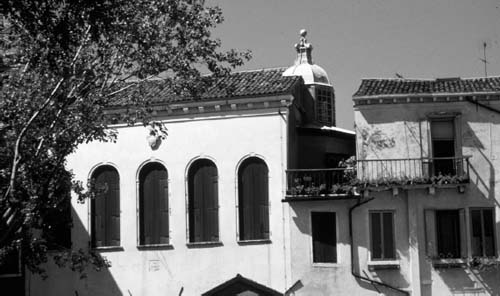JudaismHistory and Sources |
Why do Jews, Christians, and Muslims all claim the same Holy Land? |
Palestine, which covers an area of just over ten thousand square miles (roughly the size of the state of Maryland), lies in southwest Asia at the eastern end of the Mediterranean Sea. It is the Holy Land of Jews, since it was here that Moses led the Israelites after he brought them out of slavery in Egypt and it is the place where they subsequently established their homeland since it is where Jesus Christ was born, lived, and died. In the same way, the Christians feel that it is the seat of their faith since the Arab people conquered Palestine in the seventh century and, except for a brief period during the Crusades, it was ruled by various Muslim dynasties until 1516 (when it became part of the Ottoman Empire).
Palestine’s capital, Jerusalem, is also claimed as a holy city by all three religions. Jews call it the City of David (or the City of the Great King) since it was made the capital of the ancient kingdom of Israel around 1000 B.C.E. Christians regard it as holy since Jesus traveled with his disciples to Jerusalem to observe the Passover. It is the site of the Last Supper, and just outside the city, at Golgotha, Jesus was crucified (c. 30 C.E.) Muslim Arabs captured the city in 638 C.E. (just after Muhammad’s death), and, like the rest of Palestine, it has a long history of Muslim Arab rule. Jerusalem, which is now part of the modern State of Israel, is home to numerous synagogues, churches, and mosques. It also has been the site of numerous religious conflicts throughout history.
| Date | Event |
| c. 2000-1400 B.C.E. | Patriarchal Age; Abraham, revered in Hebrew Bible as father of the Hebrew people, Isaac, Jacob, and Joseph |
| c. 1800 B.C.E. | God’s Covenant with Abraham (Judaism) |
| c. 1250-1050 B.C.E. | Moses leads Exodus out of Egypt; conquest and subsequent settlement of canaan; period of the Judges |
| c. 1020-587/6 B.C.E. | Kingdoms of Saul, David, Solomon, and divided (Northern and Southern) Kingdoms |
| 835-587 B.C.E. | Age of the Pre-Exilic Prophets (Isaiah, Jeremiah, Hosea, Amos, etc.) |
| 587/6 B.C.E. | Babylonian destruction of Temple, Jewish leaders into exile in Iraq |
| 539 B.C.E. | Beginning of return from Babylonian Exile to Zion |
| 515 B.C.E. | Jewish Temple rebuilt; emergence of classical Judaism |
| 168-165 B.C.E. | Maccabean revolt, Temple defiled and restored |
| c. 50-135 C.E. | Martyr Rabbi Akiva |
| 70 C.E. | Roman destruction of “Second Temple”; Rabbi Yochanan ben Zakkai founds first Rabbinical academy at Yavneh |
| c. 390 C.E. | Jerusalem Talmud completed in Northern Israel |
| c. 499 C.E. | completion of Babylonian Talmud in Mesopotamia (Iraq) |
| 762-c. 1000 C.E. | Karaite school of Jewish thought |
| 1050 C.E. | christian persecution and massacre of the Jews in the Rhineland |
| 1134-1204 C.E. | Moses Maimonides, Jewish theologian (born Cordoba, Spain) |
| 13th Century C.E. | Major developments in Jewish theology/spirituality in Spain |
| 14th Century C.E. | Widespread persecution, expulsion of Jews from West/Central Europe |
| 1516 C.E. | First Jewish “ghetto” opens in Venice |
| 1728-1786 C.E. | Moses Mendelsohn promotes Enlightenment (Haskalah) |
| 19th Century C.E. | Major European reform movements under Samuel Holdheim, Abraham Geiger |
| 1873 C.E. | Union of American Hebrew Congregations founded |
| 1881 C.E. to present | Revival of Jewish nationalism, Haim Weitzman founds movement later named Zionism |
| 1917 C.E. | Balfour Declaration, early stirrings of State of Israel |
| 1933 C.E. | The Sho’ah (Holocaust) begins in Central Europe |
| 1948 C.E. | Founding of the State of Israel |
| 20th Century C.E. | Major developments in Reform and conservative Judaism |

Upper floor of a sixteenth-century synagogue residential building in the old Jewish ghetto in Venice, Italy. The five windows symbolize the five books of the Torah, and the small dome-crowned apse at the right marks the place of the Ark inside, where the Torah scrolls were kept while the synagogue remained in use.
